'A fading gem:' The tragic decline of Erie Canal Village, and how it could be repurposed
The proposed amphitheater project in the Erie Canal Village was publicly discussed at the last Rome Common Council meeting on April 10.
Jerry Stucchi, principal of JGK Associates – the project’s private developer – said the goal was to set the stage for a more comprehensive public workshop on April 24.
His team hired Boulder Consultants Civil Engineer Donald Ehre to conduct an engineering report.
“The report will show which buildings are repairable and which aren’t,” explained Erie Canal Village Director of Communications, Rocco Capponi. “Residents deserve to know the full history of this site so they can start to reimagine its future. Surely, the report will reveal decades-worth of neglect. So be it, it’s about time.”
According to the city’s most recent report the village had over 110 coding violations in total. “And those numbers date back to 2012,” added Capponi. “These buildings closed in 2015 and I bet a bunch more will be found.”
Stucchi and Capponi took the Observer-Dispatch on an exclusive site tour of the property. Many of the buildings were laden with black mold and water damage, but they each insisted there was still “potential.”
Bennett's Tavern
Despite ghost lore, and the possibility of encountering a family of racoons, the tour ran uninterrupted.
The first stop? Bennett’s Tavern.
Originally from McConnelsville, the structure was built in 1911 and moved to the Village in 1974.
Trains used to pass on their way to Cape Vincent and North Country so the tavern was used as a meeting palace for travelers by stagecoach or rail, Capponi noted.
The layout featured three public rooms on the first floor: barroom, dining room and parlor. “Fine accommodations for man and beast” read the sign by the bar.
“Men chewed tobacco and drank whiskey while the ladies stayed in the parlor,” said Capponi, painting a picture of what the space used to be like. “The piano is still in great condition. And look at this: a cabinet full of antiquarian books. These could be sold to Harden Douglad Rare Books in Maine at market value; instead they are just sitting here, rotting.”
JGK Associates confirmed the tavern was high on their list of structures to preserve – along with the Harden Museum and the Settler House.
“Restoration won’t be cheap or easy,” admitted Capponi. “But, if the council approves rezoning – and grants us the proper permits – we intend on repurposing the buildings so they can serve the public again.”
Harden Museum
The Harden Museum, also known as the Harden Transportation Museum, housed artifacts from the 1800s through the 20 Century: horse-drawn buggies and sleds to historical street signs.
Supposedly the former Oneida County Public Works Director Gordon Bear used to collect memorabilia and antiques. “And the proof is locked away,” Capponi said.
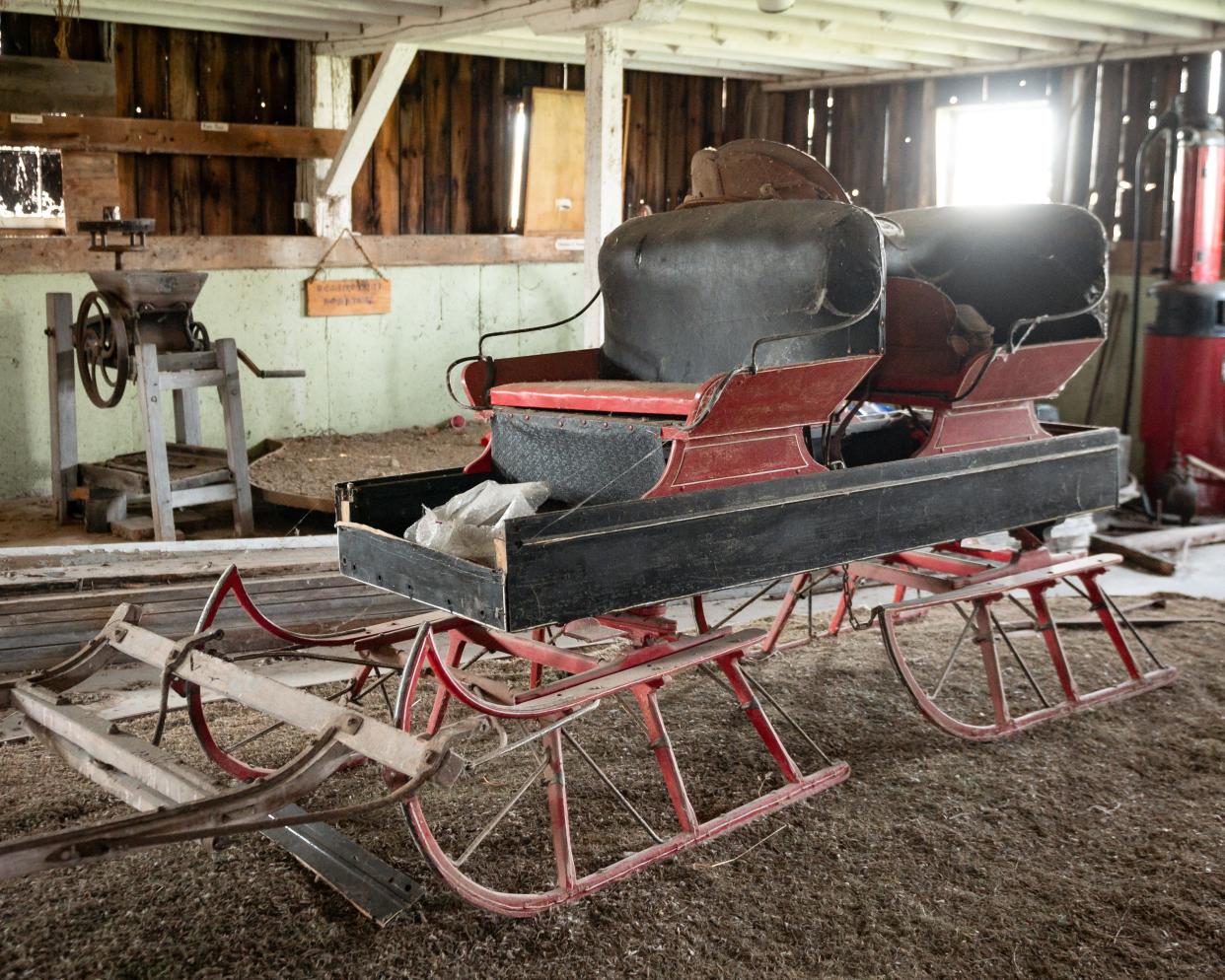
“The Harden family took their carriages to another museum but left two behind,” said Capponi. “They also left Santa’s sleigh , used for decades at village Christmas gatherings. It’s key to keep what we can. By preserving the traditions of the older generations we can extend them to young folk too.”
The neglected artifacts were scattered across different place settings, each designed to feature a myriad of surfaces found across Rome: grass, plank wood, cobblestone and cement.
Fun fact? Central NY was the first region to install a plank road.
“Upstairs was used for a ballroom at one point in time,” sighed Capponi. “And now it’s falling apart. It’s a Franken-building; some parts intact, others crumbling. It’s just a shame.”
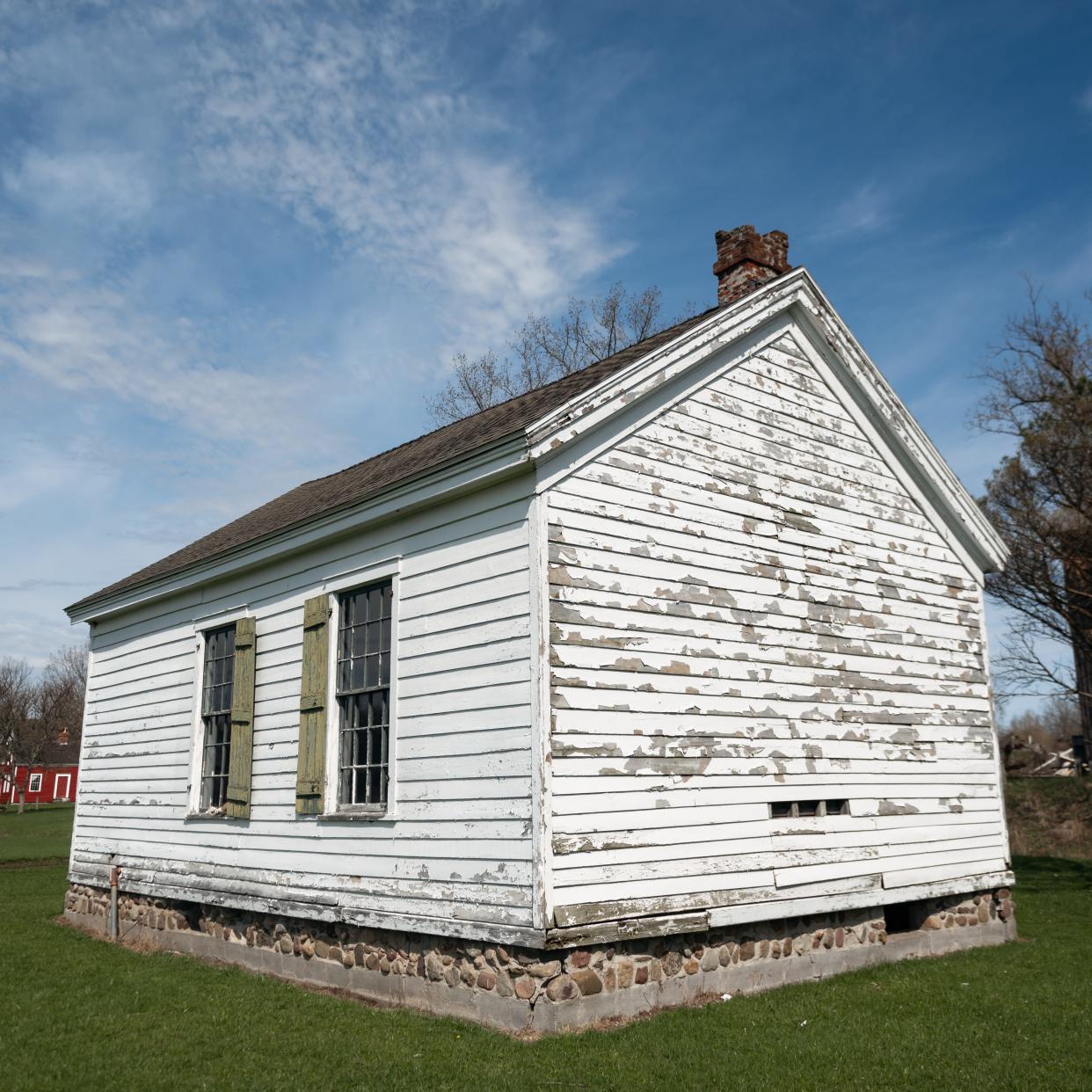
Wood Creek School House
The Wood Creek School House from the 18th century offered a glimpse at what education might have looked like in an early canal town.
“All the grades were taught in one room by one teacher,” described Capponi. “The older students would pair off to mentor the younger ones.”
Over time, the foundation began to concave and crack.
“This area is prone to flooding,” said Capponi. “Today we know that type of moisture requires open foundations. To create a proper drainage system, down the road, we’ll need consent. It all leads back to city council approval.”
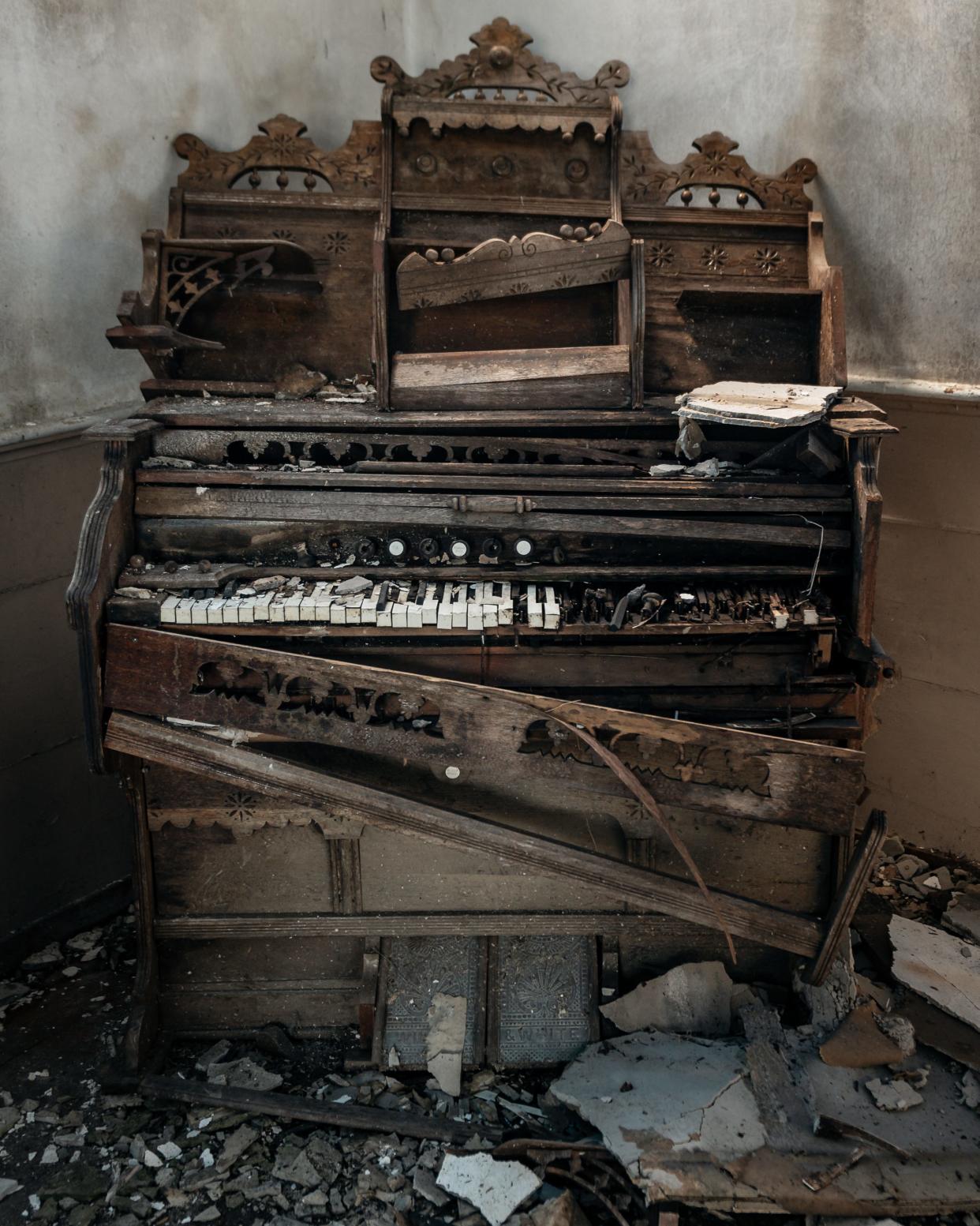
Maynard Methodist Church
Built in 1839 as a meeting house in Marcy, the Maynard Methodist Church is the oldest standing Methodist Church in New York.
As stated by Capponi, the first recording meeting was held in 1840 and more than 50 pastors served at the church over the years.
“Bibles are still stacked on the pews,” pointed out Capponi. “There are exposed electric wires and black mold. The roofing has gaps of decay, so when it rains or snows the precipitation falls inside. It could have been saved years ago, but at this point? I’m not so sure.”
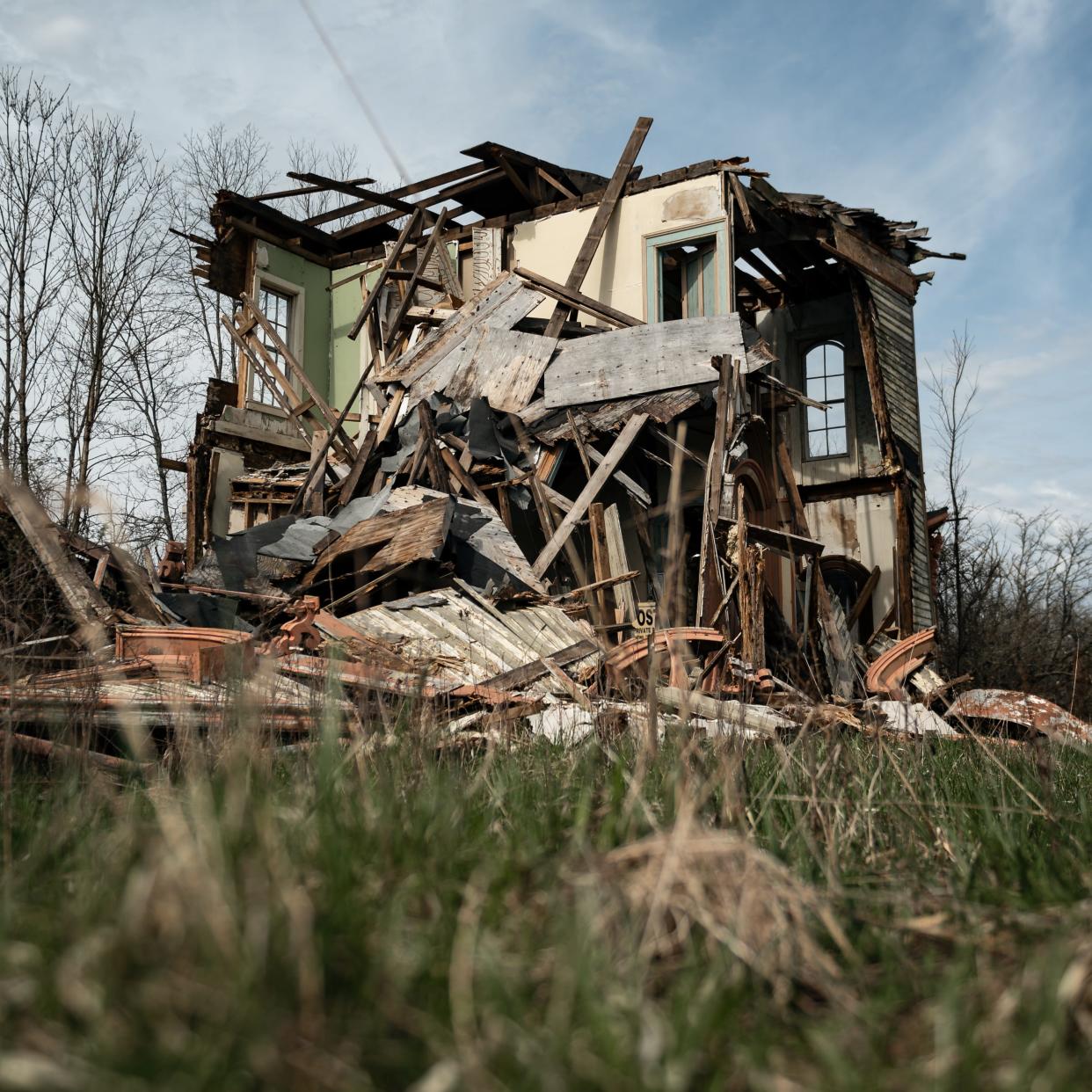
Shull House
The Italianate style home – formerly known as the Shull House – stands in ruins.
Originally located in Herkimer County, the structure was built in 1869 by wealthy cattleman, Jacob Schull. After two decades worth of abandonment, the building fell victim to weather conditions and vandalism.
Three years ago the Shull House finally collapsed.
As stated by Capponi, no state or local agency has conducted an environmental assessment or toxicological study on the site since its “crumble.”
“It’s unacceptable,” emphasized Capponi. “This could have been prevented but we’re talking about years of disregard. I feel that past officials, who once turned a blind eye to the village, don’t want it to succeed because that would highlight their failures.”
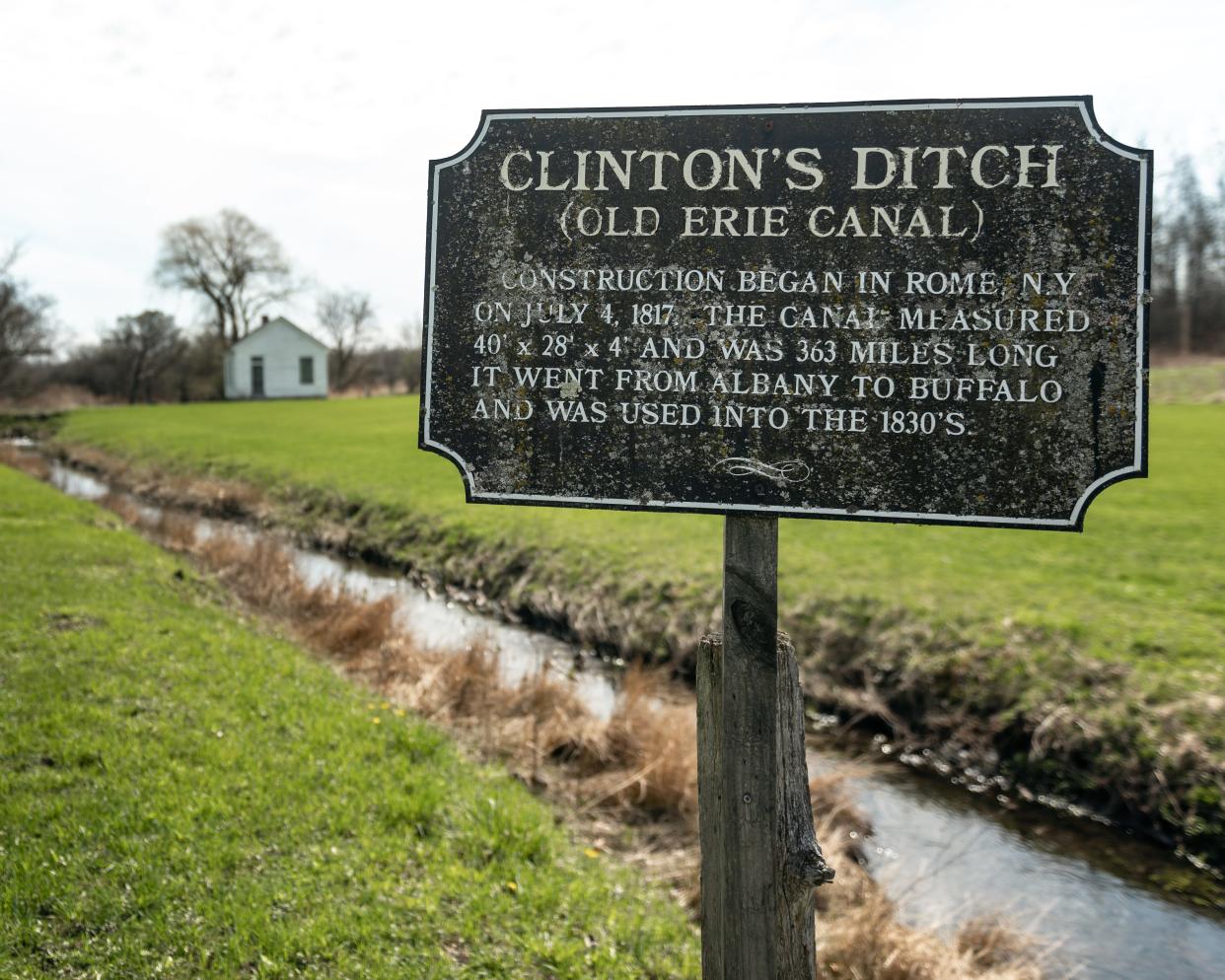
Setting the record straight
Although none of the buildings possess historical status – they aren't listed on state or national historic registries – Stucchi and Capponi agreed they hold significance to the community, “and that’s what matters.”
Recounting the most ignorant remarks heard regarding the project Capponi shared it was claims to “let mother nature run her course” and to “protect Rome’s history by leaving it untouched.”
“Decay is the antithesis of protection,” underscored Capponi. “Often when people think of the city’s past they point to the Erie Canal. During the 1960s the city obliterated the original Canal to build the West Brom drainage improvement system. What used to be the historic gem of this community now drains the Walmart parking lot. Is this how we treat what we say we care about?”.
JGK Associates plans to evaluate each building on its individual merit to determine its future.
If everything is deemed salvageable then Stucchi said the amphitheater can be placed further back on the 216 acre property “to avoid harm to the village.”
“We’re here because we want to honor the space,” Stucchi stressed. “Our vision is to take a space we feel is underutilized, enhance it, and bring people out. If we had the right partners this could become a hotspot. But ultimately, if the council is not willing to collaborate our business plan won’t have enough revenue to rehabilitate the buildings so we’ll have to look elsewhere.”
This article originally appeared on Observer-Dispatch: Erie Canal Village: Its decay and plans for new Rome amphitheater
